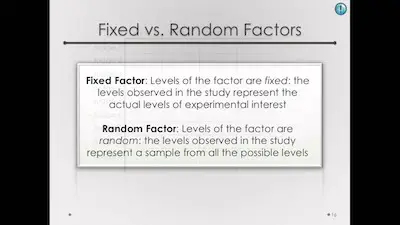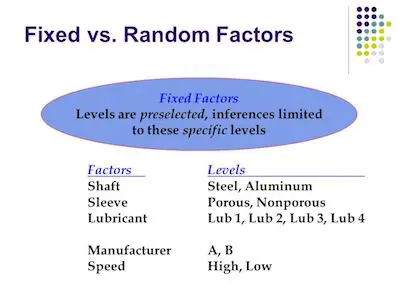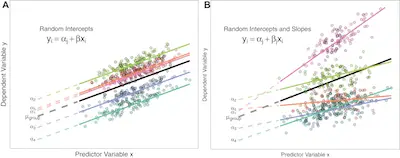When you are studying or running mixed models, then you need to be aware that you will need to keep in mind the clear distinction between fixed vs random factors. The reality is that establishing this difference between fixed vs random factors and determine which factors are fixed and which ones are random is very important since this is the only way to get an accurate analysis.
Discover everything you need to know about the z score and the z table.

One of the things that you may have already noticed is that most textbooks don’t take a good look at these factors and you may experience some problems to specify factors as fixed and random. Besides, it is also important to notice that the same factor can be considered fixed or random, depending on the objective.
Fixed Factors
The best way to think about fixed factors is in terms of differences. So, you can then state that the effect of a categorical fixed factor can be defined by differences from the overall mean. On the other hand, the effect of a continuous fixed factor which is usually called covariate can be defined by its slope. So, how the mean of the dependent variable differs with differing values of the factor.
We can then state that the output of fixed factors estimates for slopes or mean-differences.
These are the statistical analysis rules that you should forget about.
Random Factors
As you can easily understand, random factors are defined by a distribution and not by differences. Ultimately, the values of a random factor are assumed to be picked from a population with a normal distribution with a certain variance.
What is statistical significance?
Situations That Indicate Fixed Factors

- The factor is the primary treatment that the researcher wants to compare.
- The factor is a secondary control variable, and the researcher wants to control for differences in this factor.
- The factor has only two values.Even if everything else indicates that a factor should be random, if it has only two values, the variance cannot be calculated, and it should be fixed.
Discover everything you need to understand the standard deviation.
Situations That Indicate Random Factors

- The researcher is interested in quantifying how much of the overall variation to attribute to this factor.
- The researcher is not interested in knowing which means differ but wants to account for the variation in this factor.
- The researcher would like to generalize the conclusions about this factor to the whole population.
- Any interaction with a random factor is also random.
Bottom Line
Hopefully, you now have a better understanding about the difference between fixed vs random factors. While this is not hard, the truth is that this difference isn’t well stated among most textbooks and this is why so many statistics students experience difficulties in this subject.
As a last note, it is important to keep in mind that how the factors of a model are specified can have great influence on the results of the analysis and on the conclusions drawn.
